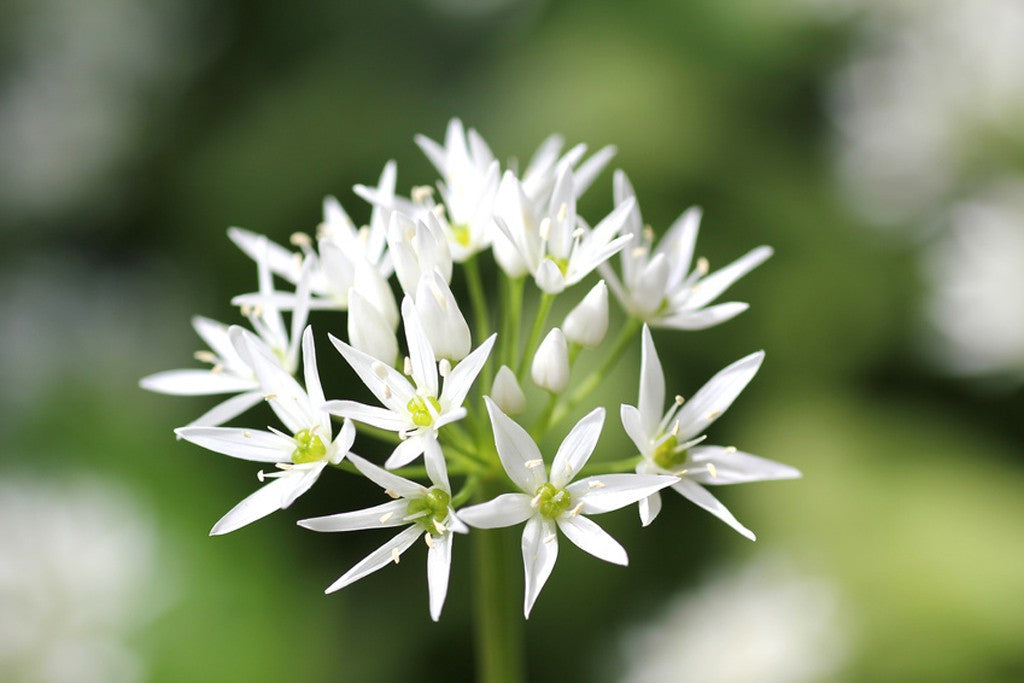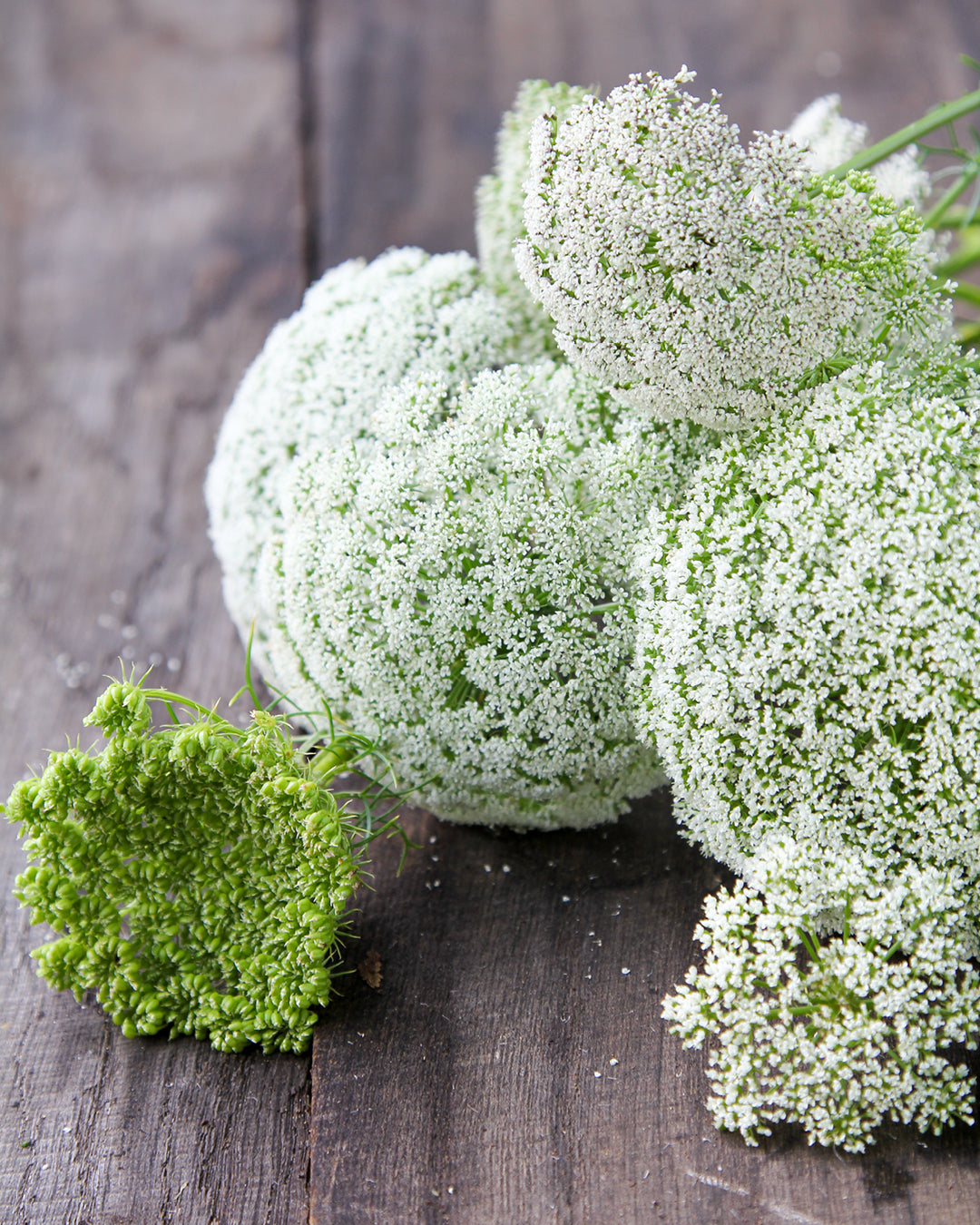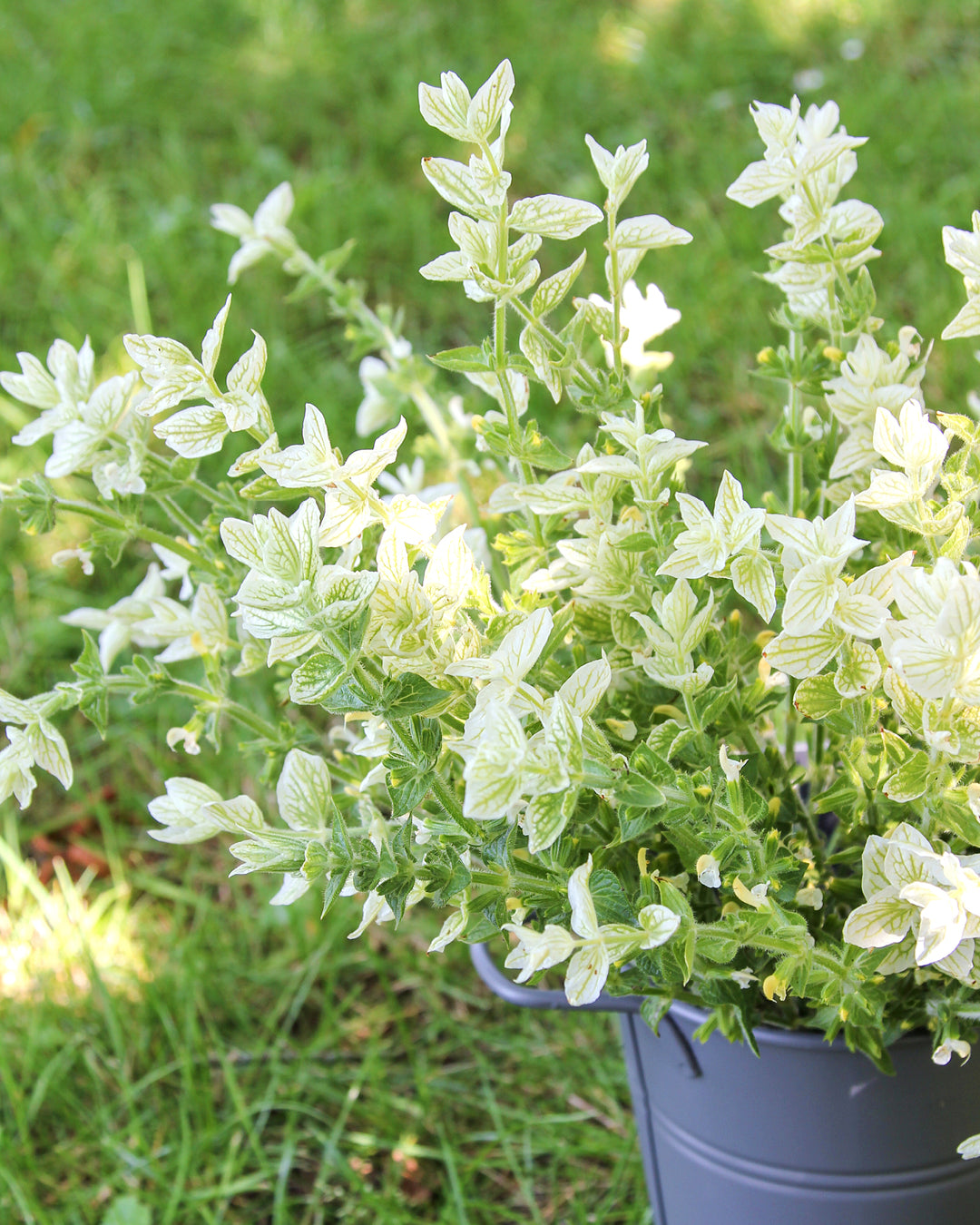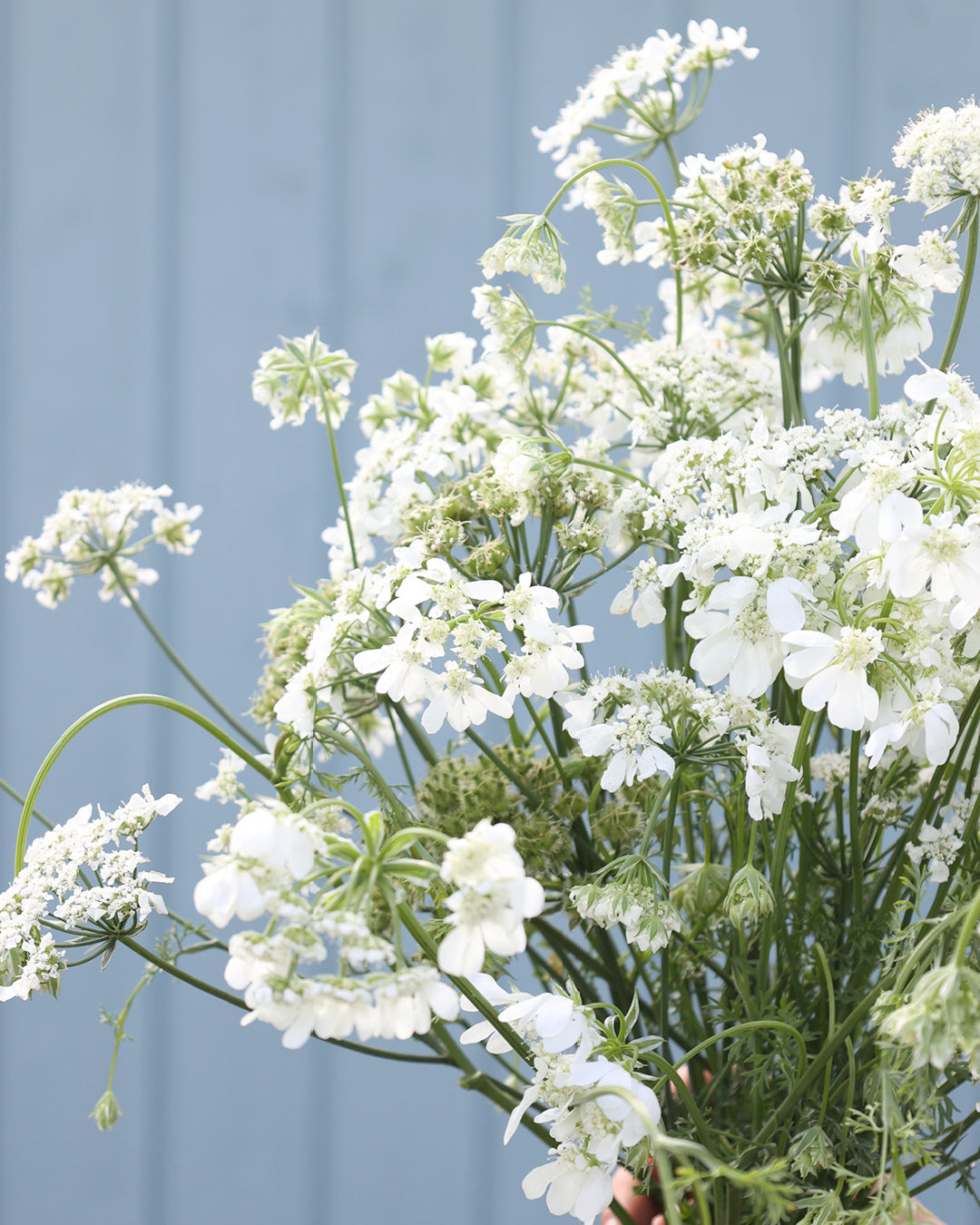wild garlic
Wild garlic is a wonderfully fragrant, native forest dweller that can be cultivated in your own garden—provided you have some space!

Latin name:Allium ursinum
Plant group:Bulbous plant; a type of onion from the genus Allium, which also includes chives and garlic or ornamental onions.
Location:Under light deciduous shrubs and trees in a partially shaded location on humus-rich, nutrient-rich soils.
Growth:From March, lush green, long-stemmed, broad-lanceolate leaves, 20–30 cm high; completely retracts after flowering in June.
Blossom:White, star-shaped in umbels; April-May
Care:Add mature compost to the soil in the fall. Don't dig the soil around the bulbs! If you want to strengthen the plants, remove the seed heads after flowering; these can be pickled like miniature capers!
A notice:
Wild garlic needs at least three years to establish itself in a location. Until then, you should hold off on harvesting, as the harvest will be more abundant afterward. However, you should give it some space, because once it takes root, it spreads rapidly, which can sometimes become a nuisance.
Wild garlic knowledge:
If you're taking a walk in a light woodland in spring, don't be surprised if you suddenly smell the scent of garlic. Then you're lucky enough to have come across wild garlic. This native wild herb prefers to grow in herb-rich, partially shaded deciduous forests on fresh, humus-rich soils. The wild garlic season begins in March and lasts until May/June, depending on the location. Once the trees are in full leaf, it retreats. Wild garlic should be gathered before the bulbous plant (Allium ursinum) blooms. That's when it tastes best! But be careful: This is when the leaves can easily be confused with the poisonous lily of the valley. To be on the safe side, rub the leaves between your fingers. With that unmistakable garlic smell, all is well! Wild garlic's main flowering time is in May. Then the white, star-shaped flower umbels cover the forest floor. A magnificent sight!
Note for self-pickers:
Only collect from locations where the populations are sufficiently large, as wild garlic spreads very slowly! Do not harvest entire plants; only 1-2 leaves per plant from the base of the stem. It's best to cut the leaves off with a sharp knife; do not pull, as this risks uprooting the entire plant.
Collecting plants is generally prohibited in the nature reserve – and this doesn't just apply to wild garlic! Incidentally, if you're not a forest ranger, you can also buy fresh wild garlic in bunches at the weekly market or from well-stocked greengrocers.
TEXT: Martina Raabe

















